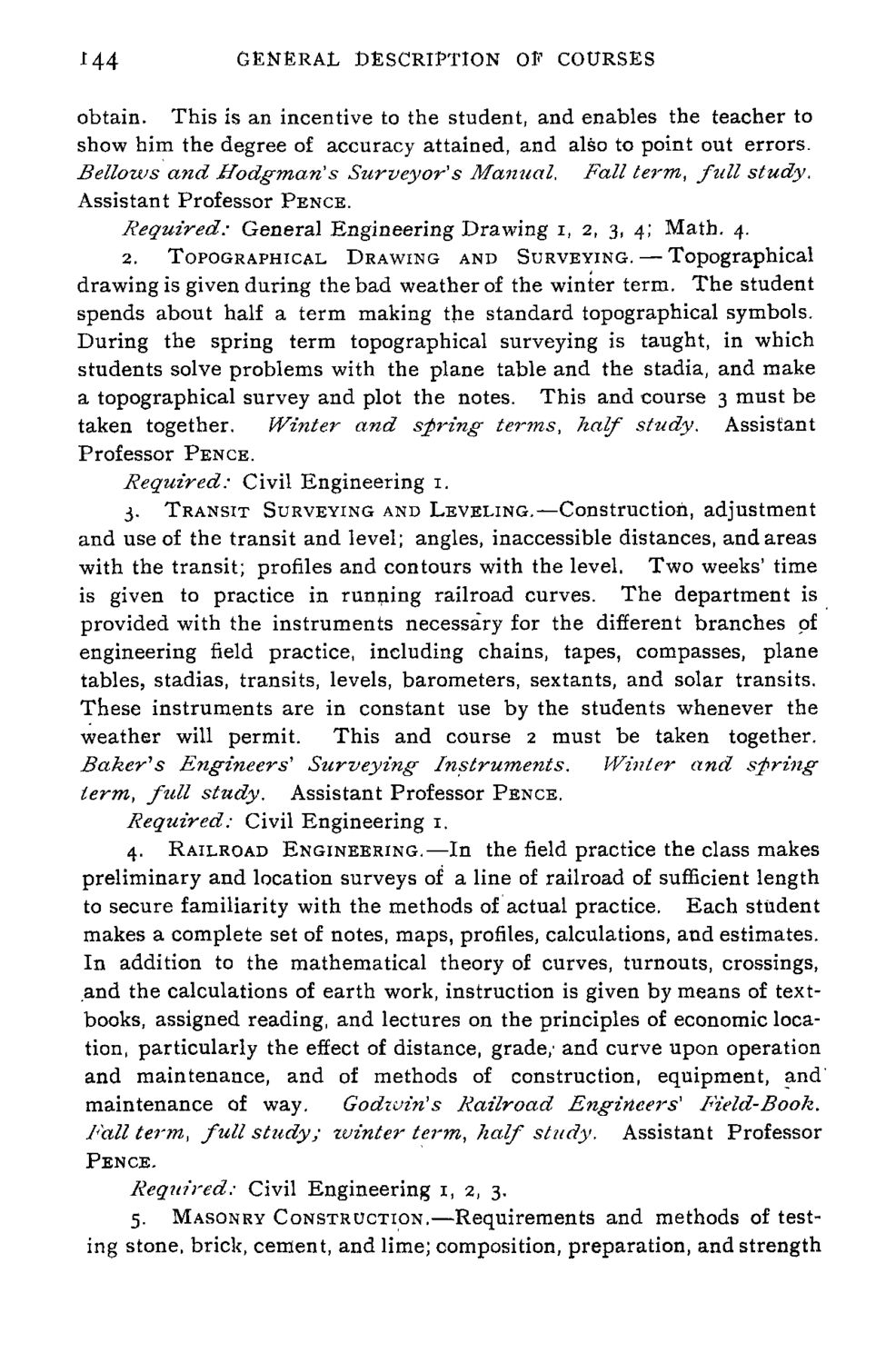| |
| |
Caption: Course Catalog - 1896-1897
This is a reduced-resolution page image for fast online browsing.

EXTRACTED TEXT FROM PAGE:
144 GENERAL DESCRIPTION OF COURSES obtain. This is an incentive to the student, and enables the teacher to show him the degree of accuracy attained, and also to point out errors. Bellows and Uodgman's Surveyor's Manual. Fall term, full study. Assistant Professor PENCE. Required: General Engineering Drawing i, 2, 3, 4; Math. 4. 2. TOPOGRAPHICAL DRAWING AND SURVEYING. — Topographical drawing is given during the bad weather of the winter term. The student spends about half a term making the standard topographical symbols. During the spring term topographical surveying is taught, in which students solve problems with the plane table and the stadia, and make a topographical survey and plot the notes. This and course 3 must be taken together. Winter and spring terms, half study. Assistant Professor PENCE. Required: 3. Civil Engineering 1. TRANSIT SURVEYING AND LEVELING.—Construction, adjustment and use of the transit and level; angles, inaccessible distances, and areas with the transit; profiles and contours with the level. Two weeks' time is given to practice in running railroad curves. The department is provided with the instruments necessary for the different branches of engineering field practice, including chains, tapes, compasses, plane tables, stadias, transits, levels, barometers, sextants, and solar transits. These instruments are in constant use by the students whenever the weather will permit. This and course 2 must be taken together. Baker's Engineers' Surveying Instruments. Winter and spring term, full study. Assistant Professor PENCE. Required: Civil Engineering 1. 4. RAILROAD ENGINEERING.—In the field practice the class makes preliminary and location surveys of a line of railroad of sufficient length to secure familiarity with the methods of actual practice. Each student makes a complete set of notes, maps, profiles, calculations, and estimates. In addition to the mathematical theory of curves, turnouts, crossings, and the calculations of earth work, instruction is given by means of textbooks, assigned reading, and lectures on the principles of economic location, particularly the effect of distance, grade; and curve upon operation and maintenance, and of methods of construction, equipment, and maintenance of way. Godiuin's Railroad Engineers' Field-Book. Fall term, full study; zvinter term, half study. Assistant Professor PENCE. Required: Civil Engineering 1, 2, 3. 5. MASONRY CONSTRUCTION.—Requirements and methods of testing stone, brick, cement, and lime; composition, preparation, and strength
| |